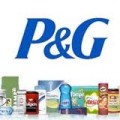Extending a brand into new outlets is highly rewarding but also fraught with challenges and potential disaster. This post is about how to extend a brand successfully.
Fortune wrote a story about Starbucks’ Grocery Gambit in December.
Not too many years ago Starbucks was forced to retrench. The founder came back to revive the company and brand. Starbucks’ had failed to define its brand in increasing competition in the core cafe business. Expansion was rapid with the introduction of too many food products through their locations that detracted from the coffee service experience.

Now Starbucks is making a big packaged goods push into grocery retail. How and why can that work better than before?
Many brands try to extend their branded products to grow sales into new markets and channels, e.g. supermarkets, but often fail. The reasons come down to key fundamentals. Here’s how to extend a brand into new outlets:
- Understand the values of your brand. What appeals to customers? Why do they buy and keep buying? In Starbucks I believe it’s about two main aspects— sure good coffee product, but more importantly the experience of the customer service and cafe environments. There’s a consistency of quality expectation when one holds a Starbucks beverage that is available anytime, anywhere.
- What are the physical characteristics of how the customer interacts with the brand? Does the quality experience depend on how the product is presented, and therefore there are limitations to how customers can be served? In Krispy Kreme’s case, I was first introduced to the brand at a luxury hotel in Las Vegas. The open window retail shop with a view of warm, sweet smelling, freshly made doughnuts coming along the conveyor belt gathered crowds and long lines of eager customers waiting to savor a premium priced doughnut. But efforts to expand into packaged doughnuts at sporting venues, retail and convenience and gas station outlets failed to bring the same quality expectation for the product. Consequently, sales also failed and badly affected the Krispy Kreme brand’s fresh made doughnut shop image.
- Build on core product attributes and ensure they can be translated to other channel outlets. What aspects can be readily transferred that support the brand’s key qualities and indeed reinforces them? For example, Starbucks’ grocery push is about the core coffee ingredient, packaged coffee beans. They already sell packaged coffee in their stores. They can readily create a special blend for the supermarket, as they are for Safeway, that
- a) reinforces the premium ingredient of the Starbucks coffee brand;
- b) is incremental business with minimal cannibalization to the cafe business because the Barista experience and the value of a fresh, conveniently made coffee. Enjoying the Starbucks cafe experience is complementary to the retail effort.
In summary, beware of overlooking what your brand values are and how the customer perceives your company. The numbers for reaching new markets may look highly attractive, but consider if the brand will translate to new market outlets. If there are limitations, then consider how to overcome the issues. By placing the customer at the center of your business strategy and marketing your brand can extend into new outlets. This is how a company can be effective in capturing share of mind and consumer stomach.
If you’d like to read more about how brands matter in a purchase decision, and the premium price and profitability difference between one product or another check out this Ad Age article.
You can find other posts related to this subject below.
Peter Klinge, Jr. helps small to mid-size companies achieve their next stage of growth.





In the 1990s, 81 percent of new products used brand extension to introduce new brands and to create sales.